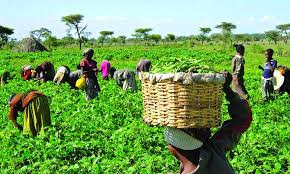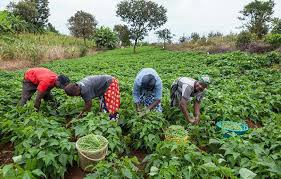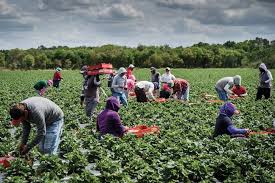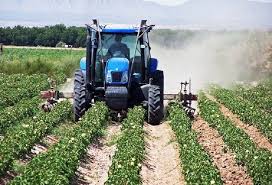The impact of agriculture on GDP is profound, as it remains a crucial driver of economic growth, especially in developing countries. Agriculture supports not only crop and livestock production but also includes a variety of related activities such as agro-processing, agricultural services, and biofuel production.
These activities together contribute significantly to a country’s GDP, employment, and food security, reinforcing the sector’s pivotal role in the economy.
Several factors influence the extent to which agriculture impacts GDP. These include technological advancement, availability of arable land, investment in agricultural infrastructure, and government policies supporting the sector.
In many developing countries, agriculture forms a substantial percentage of GDP, providing essential income and livelihood for rural communities.
On the other hand, in developed countries, while agriculture’s percentage contribution to GDP may be smaller, its role remains vital in terms of food supply, exports, and rural employment.
Agriculture contributes to GDP in various ways. First, it generates raw materials for industries such as food processing and textiles, which drives economic growth. Second, the sector creates jobs and income for millions, reducing poverty and stimulating spending in local economies.
Third, agricultural exports are a major source of foreign exchange, strengthening the balance of payments and allowing countries to invest in other sectors. Finally, agriculture underpins food security, which is essential for economic stability and growth.
As economies advance, agriculture’s role in GDP evolves, integrating innovations like precision farming, biotechnology, and sustainable practices.
These changes ensure that agriculture remains an indispensable part of economic development, emphasizing the importance of strategic investments and policies that maximize its contribution to GDP.
Historical Overview of Agriculture’s GDP Contribution

Agriculture has historically been a cornerstone of economic development, particularly during early stages of industrializatio.
In many countries, the sector initially accounted for a major share of GDP, providing essential sustenance and employment. During the Industrial Revolution, agriculture played a crucial role by supplying raw materials for emerging industries and facilitating urbanization through increased food production.
As economies grew, however, the contribution of agriculture to GDP often diminished, giving way to industry and services sectors. In developed nations, the sector’s share of GDP shrank further due to rapid technological advancements and economic diversification, although agricultural productivity continued to increase.
In contrast, in many developing countries, agriculture still constitutes a significant portion of GDP and remains integral to livelihoods and economic stability.
Current Statistics on Agriculture’s GDP Impact
Today, agriculture’s GDP contribution varies widely across different regions. In low-income countries, agriculture often makes up 20-30% of GDP, reflecting its role as a primary economic driver and employer.
In sub-Saharan Africa, for example, agriculture accounts for around 15% of GDP on average but can reach over 30% in certain countries. In contrast, agriculture typically contributes less than 2% to GDP in high-income countries, where advanced economies rely more heavily on the services and industrial sectors.
Globally, agriculture’s GDP contribution is estimated to be around 4%, but its significance extends beyond this figure. The sector supports vast employment and trade, with global agricultural exports valued at approximately $1.8 trillion.
Agriculture remains a vital source of income, foreign exchange, and food security, especially as the world faces growing challenges such as climate change, population growth, and food demand.
Factors Influencing Agriculture’s GDP Contribution
1. Technological Advancements: Innovations in farming equipment, irrigation systems, and biotechnology have boosted agricultural productivity, enabling countries to produce more food with fewer resources and increasing agriculture’s GDP contribution.
2. Climate and Environmental Conditions: Favorable weather and soil quality significantly impact agricultural output, leading to higher crop yields in stable climates, while adverse weather can limit productivity and affect GDP.
3. Access to Arable Land: Countries with large amounts of fertile land have greater potential for agricultural production, allowing for extensive crop cultivation and livestock grazing, which enhances GDP contributions.
4. Government Policies and Subsidies: Supportive government policies, including subsidies and investment in rural infrastructure, improve agricultural productivity and help farmers adopt modern practices, ultimately increasing GDP.
5. Market Access and Global Trade Agreements: Access to global markets through trade agreements enables countries to export agricultural products, boosting GDP by opening new opportunities for growth and earning foreign exchange.
Read Also: 17 Medicinal Health Benefits of Campeche Basil (Ocimum campechianum)
The Role of Crop Production in GDP

1. Food Supply and Security: Crop production is vital for ensuring a stable food supply, underpinning food security and contributing to economic stability by reducing reliance on imports.
2. Raw Materials for Industries: Crops like cotton and sugarcane supply essential raw materials for industries such as textiles and biofuels, driving economic growth by creating jobs and adding value.
3. Export Revenues: Growing crops for export, such as coffee and cocoa, generates substantial foreign exchange, strengthening the national economy and boosting GDP.
4. Link to Agro-industries: Crop production supports food processing and packaging industries, adding economic value by transforming raw produce into finished products and creating additional jobs.
Livestock Farming and Its GDP Contribution
1. Meat and Dairy Production: Livestock farming provides essential food products like meat and milk, which are staple sources of nutrition, contributing significantly to GDP in regions with high demand.
2. Income for Rural Communities: Livestock farming serves as a major income source for rural households, generating revenue that stimulates local economies and supports broader economic growth.
3. Export Opportunities: Livestock products, including beef and dairy, are significant exports for many countries, contributing to foreign exchange earnings and strengthening the balance of payments.
4. By-products for Other Industries: Livestock farming produces valuable by-products like leather and wool, which support related industries such as textiles and fertilizer production, enhancing the overall GDP contribution.
Economic Benefits of Agricultural Exports
1. Increased Foreign Exchange Earnings: Agricultural exports generate significant foreign exchange, helping countries stabilize their economies and finance imports, thereby enhancing overall GDP.
2. Job Creation: The export sector creates jobs not only in farming but also in processing, transportation, and distribution, contributing to reduced unemployment and economic growth.
3. Improved Balance of Payments: A robust agricultural export sector improves a country’s balance of payments, allowing for greater investment in infrastructure and services, which further supports GDP growth.
4. Market Diversification: Engaging in agricultural exports allows countries to diversify their markets, reducing reliance on domestic consumption and spreading economic risks associated with fluctuations in local demand.
5. Investment Attraction: Countries with strong agricultural export sectors often attract foreign investments, boosting their economies and creating additional opportunities for growth and development.
Read Also: Forms of Phosphorus in Soil and Phosphorus Deficiency and Toxicity
Agricultural Innovations and GDP Growth

1. Enhanced Productivity: Innovations such as precision farming and genetically modified crops lead to increased yields and efficiency, directly contributing to higher agricultural output and GDP growth.
2. Sustainable Practices: The adoption of sustainable agricultural practices can improve soil health and resource management, ensuring long-term productivity and stability in agricultural contributions to GDP.
3. New Markets and Products: Agricultural innovations can create new markets for specialty crops and organic products, expanding the agricultural sector’s contribution to GDP by catering to evolving consumer preferences.
4. Technological Integration: The use of technology, including drones, data analytics, and automated equipment, streamlines farming processes, reduces costs, and boosts profitability, further enhancing GDP.
5. Research and Development Investment: Investment in agricultural research and development fosters innovation, improving resilience against climate change and diseases, thus sustaining and increasing GDP contributions over time.
Challenges Facing Agriculture’s GDP Contribution
1. Climate Change: Increasingly erratic weather patterns and extreme climate events pose significant risks to agricultural productivity, threatening food security and economic stability.
2. Land Degradation: Over-farming, deforestation, and poor land management practices lead to soil degradation, reducing agricultural productivity and its overall contribution to GDP.
3. Market Access Barriers: Trade restrictions, tariffs, and other barriers can limit access to international markets for agricultural products, hindering potential GDP growth.
4. Access to Capital and Technology: Many farmers, especially in developing countries, face challenges in accessing financing and modern technology, limiting their ability to innovate and increase productivity.
5. Policy Instability: Inconsistent government policies regarding agriculture can create uncertainty, discouraging investment and leading to suboptimal performance in the agricultural sector, ultimately affecting GDP contributions.
Do you have any questions, suggestions, or contributions? If so, please feel free to use the comment box below to share your thoughts. We also encourage you to kindly share this information with others who might benefit from it. Since we can’t reach everyone at once, we truly appreciate your help in spreading the word. Thank you so much for your support and for sharing!
Read Also: The Impact of Inhaler Disposal on Our Environment

